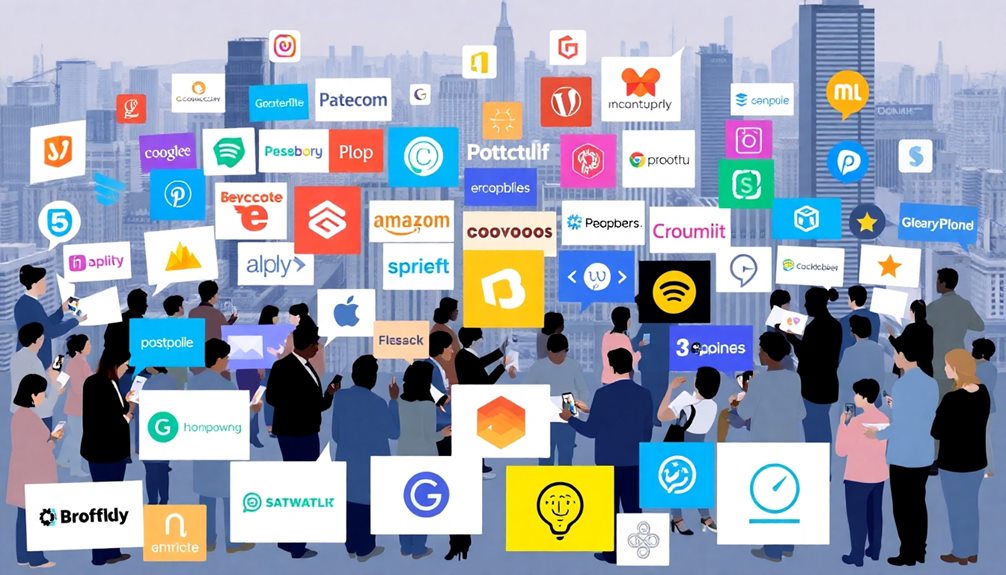Crowdfunding's all about pooling small contributions from a large number of people, typically through online platforms. You can launch a campaign with specific goals and deadlines, using compelling pitches to engage backers. There are several types you might consider, like donation-based, rewards-based, and equity crowdfunding, depending on your project's needs. Platforms like Kickstarter and GoFundMe are popular choices for this approach. Successful campaigns often rely on good storytelling and effective marketing to connect with potential supporters. Understanding these nuances can really enhance your efforts, so stick around to uncover more insights on maximizing your crowdfunding strategy.
Key Takeaways
- Crowdfunding is a fundraising method that collects small contributions from a large group through online platforms, aiming to support projects or businesses.
- Campaigns are presented with specific goals and deadlines, often using an all-or-nothing model to incentivize backers.
- Types of crowdfunding include donation-based, rewards-based, equity, and debt crowdfunding, catering to various funding needs.
- Successful campaigns rely on compelling storytelling, engaging visuals, and effective social media marketing to attract and retain backers.
- The average crowdfunding campaign raises about $568, with individual contributions averaging $99, highlighting the collective effort of many small donors.
What Is Crowdfunding?

Crowdfunding is a popular fundraising method that allows individuals and organizations to gather small contributions from a large group of people, often through online platforms. This approach is particularly beneficial for projects and businesses looking to raise money without relying on traditional funding sources.
With the global crowdfunding market valued at approximately $1.17 billion in 2023, it's clear that many are turning to this innovative method to meet their funding goals.
There are several types of crowdfunding, including donation-based, rewards-based, equity, and peer-to-peer lending. Each type caters to different funding needs and investor expectations, making it essential for you to choose the right model for your specific project.
Successful campaigns often hinge on effective marketing and engaging storytelling, which help draw in backers and keep them invested in your vision.
How Crowdfunding Works

When you launch a crowdfunding campaign, you present your project on an online platform, setting specific goals and deadlines to attract potential backers. These platforms allow small business owners and individuals to share their visions with a broad audience, making raising money more accessible than traditional funding methods.
Your campaign typically includes a compelling pitch that outlines your project's goals and the rewards you offer based on contribution levels.
Most crowdfunding platforms use an all-or-nothing funding model, meaning if you don't reach your target by the deadline, all pledges are returned to contributors. This encourages backers to rally around your project, as they want to see it succeed.
On average, a crowdfunding campaign raises about $568, with individual contributions averaging around $99, creating a viable option for various projects.
Successful crowdfunding campaigns often employ effective marketing strategies, such as storytelling and social media promotion, to engage potential backers.
Types of Crowdfunding

In today's fundraising landscape, various types of crowdfunding exist to cater to different needs and goals. Understanding these crowdfunding models can help you choose the best option for your project funding.
Here's a brief overview of the primary types:
- Donation-based crowdfunding: Donors contribute money without expecting any returns, often supporting charitable causes or personal projects.
- Rewards-based crowdfunding: Backers receive incentives like products or experiences in exchange for their contributions, appealing to small businesses and creators alike.
- Equity crowdfunding: Investors purchase shares in a business, gaining ownership and potential dividends. This model is particularly suitable for startups seeking significant funding.
- Debt crowdfunding: Involves peer-to-peer lending, where investors provide loans to businesses, expecting repayment plus interest, often at lower rates than traditional banks.
Additionally, hybrid crowdfunding models combine elements from various types, enhancing the flexibility of fundraising options.
Each model has its unique benefits, so it's essential to assess which aligns best with your goals and investor expectations. By understanding these options, you'll be better equipped to secure the money necessary for your endeavors.
Popular Crowdfunding Platforms

The rise of popular crowdfunding platforms has transformed how individuals and businesses raise funds for their projects. Platforms like Kickstarter have raised over $8.29 billion from nearly 98 million backers, boasting a success rate of around 40%. If you're considering launching a project, Kickstarter could be a great option.
For small businesses, GoFundMe stands out, having raised over $30 billion since 2010, particularly for personal and charitable causes.
Indiegogo offers flexible funding, allowing you to keep raised funds even if you don't reach your goal, which can be a game-changer for project success. With more than $3 billion raised for over 800,000 projects, it's a versatile choice.
If you're looking for ongoing financial backing, Patreon supports creators through a subscription model, having raised around $413.3 million.
For those interested in investment opportunities, StartEngine is a leading equity crowdfunding platform focused on startups, with over $1.2 billion raised. This platform allows investors to gain shares in new companies, making it a unique option for both raising funds and attracting investors.
Each of these popular crowdfunding platforms has distinct features that can help you achieve your project goals.
Strategies for Successful Campaigns

Crafting a successful crowdfunding campaign requires a blend of strategy and creativity. To guarantee you engage potential backers effectively, focus on these key elements:
- Compelling storytelling: Share your project's mission and vision to foster an emotional connection.
- Realistic funding goals: Set achievable targets to encourage support and excitement, rather than scaring backers away.
- Engaging visuals: Incorporate videos and eye-catching images, as campaigns with videos raise about 9% more than those without.
- Social media marketing efforts: Leverage social platforms to reach a broader audience and boost donor engagement.
Throughout your campaign, keep communication flowing. Regular updates on project progress make backers feel valued, enhancing their connection to your mission.
Use social media and email marketing to promote your campaign and maximize visibility, as effective use of these channels can lead to a 50% higher success rate.
Frequently Asked Questions
How Does Crowdfunding for a Business Work?
Crowdfunding for your business works by creating a campaign on an online platform. You set a funding goal and a timeline to attract contributions from many backers.
To succeed, you'll need to engage potential investors with compelling stories and visuals. Depending on your approach, backers might receive equity or rewards.
If you choose an all-or-nothing model, you'll only get the funds if you reach your goal, encouraging you to work hard for success.
What Are the 4 Types of Crowdfunding?
When you're exploring crowdfunding, you'll find four main types.
First, there's donation-based crowdfunding, where you support causes without expecting anything back.
Then, rewards-based crowdfunding offers you non-financial perks for your backing.
Equity crowdfunding lets you buy shares in a company, giving you ownership and potential dividends.
Finally, debt crowdfunding involves lending money to businesses, expecting repayment plus interest.
Each type serves different needs, so choose based on what aligns with your goals.
What Are the Pros and Cons of Crowdfunding for Your Business?
Imagine you're a knight seeking treasure, right? Crowdfunding can be your trusty steed, offering access to diverse funding and valuable market feedback.
It builds community support, helping you forge stronger customer relationships. However, if you miss your funding goal, it could tarnish your reputation.
Plus, competition is fierce, so you'll need a solid marketing strategy. Don't forget about regulatory compliance, as it's essential to protect both you and your backers.
How Do Investors Get Paid Back From Crowdfunding?
Investors get paid back from crowdfunding in different ways, depending on the type of campaign.
In equity crowdfunding, you might receive dividends or profit shares if the business thrives.
With debt-based crowdfunding, you'll get your loan back with interest over time.
In rewards-based crowdfunding, you won't earn money but can enjoy perks like early product access.
Donation-based crowdfunding doesn't offer returns, as it's purely for supporting a cause.
Conclusion
In the world of crowdfunding, you can ignite your vision, fuel your passion, and rally support for your projects. By understanding what crowdfunding is, how it works, and the different types available, you're equipped to make your campaign a success. Embrace the power of community, leverage popular platforms, and implement effective strategies. So, whether you're launching a creative endeavor or a business venture, seize the opportunity to connect, inspire, and achieve your goals together.










